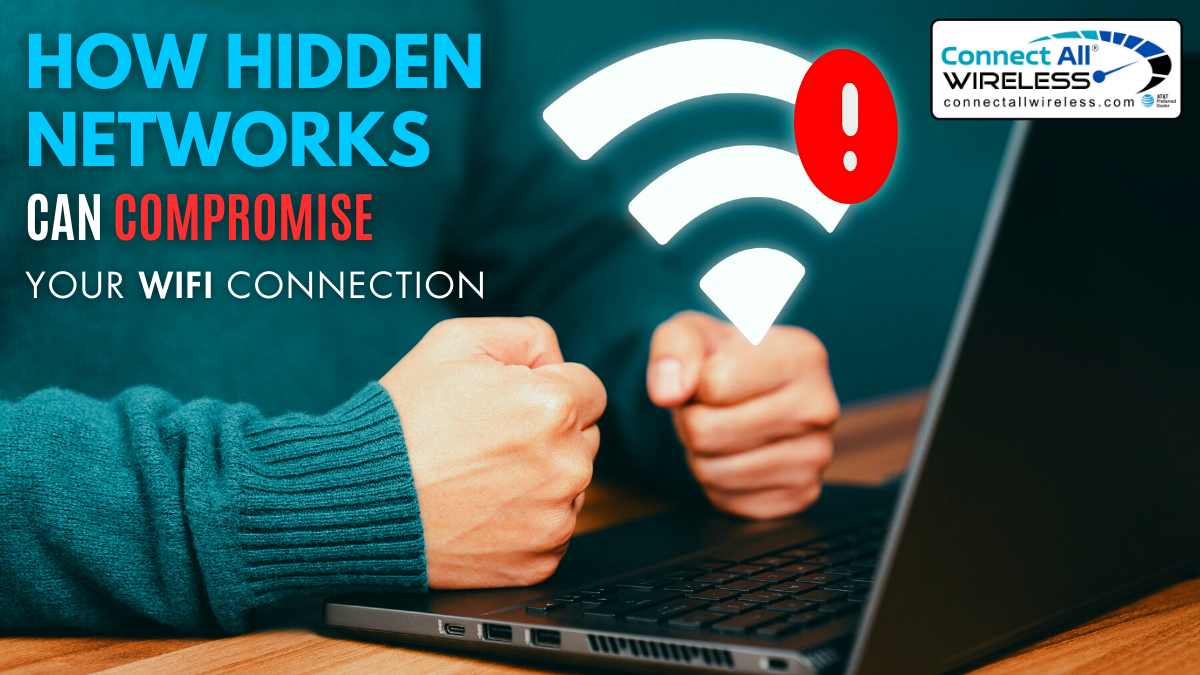How Hidden Networks Can Compromise Your WiFi Connection
February 12, 2024In an era where connectivity is paramount, WiFi has become an indispensable part of our daily lives. From streaming movies to conducting business meetings, the convenience of wireless internet has revolutionized the way we interact with the digital world. However, as we embrace the convenience, there’s a lurking threat that often goes unnoticed – hidden networks. This blog post aims to shed light on how these hidden networks can compromise your WiFi connection and what steps you can take to safeguard your digital fortress.
Understanding Hidden Networks:
A hidden network, also known as a closed network, is one that does not broadcast its SSID (Service Set Identifier). The SSID is the name of your WiFi network that users see when scanning for available connections. Hidden networks operate stealthily, requiring users to manually input the SSID and password for access. While this may seem like an added layer of security, it comes with its own set of vulnerabilities.
1. Security through Obscurity:
The main allure of hidden networks is the illusion of enhanced security. Many users believe that by concealing their SSID, they are making their WiFi network invisible to potential hackers. However, security through obscurity is a risky strategy. Knowledgeable attackers can easily detect hidden networks using various tools, rendering this perceived advantage obsolete.
2. Increased Susceptibility to Attacks:
Contrary to popular belief, hidden networks can be more susceptible to certain types of attacks. Since the SSID is not broadcasted, devices in range must actively probe for the network, making them susceptible to probe request attacks. Hackers can exploit this vulnerability by intercepting probe requests and launching various attacks, such as deauthentication attacks, leading to a potential compromise of your WiFi connection.
3. Difficulty in Detection and Troubleshooting:
Hidden networks can create challenges for both network administrators and users. Detecting unauthorized access becomes more difficult, as traditional network scanning tools may not identify hidden networks. Additionally, troubleshooting connectivity issues becomes more complex, as the lack of SSID broadcasting can hinder the diagnosis of problems and the implementation of effective solutions.
Protecting Your WiFi Connection:
Understanding the risks associated with hidden networks is the first step towards securing your WiFi connection. Here are some proactive measures to mitigate these risks:
1. Regularly Update Passwords:
Keeping your WiFi password updated is a simple yet effective way to enhance security. Regularly changing your password helps thwart potential attackers, even if they manage to detect your hidden network.
2. Use WPA3 Encryption:
Ensure that your WiFi network is using the latest encryption standard – WPA3 (Wi-Fi Protected Access 3). WPA3 offers improved security features compared to its predecessor, WPA2, making it more resilient against various cyber threats.
3. Avoid Relying Solely on Hidden Networks:
Instead of relying solely on the obscurity of hidden networks, complement it with other security measures. Implement strong encryption, enable MAC address filtering, and regularly update your router firmware to fortify your defenses.
4. Monitor Network Activity:
Regularly monitor your network for suspicious activity. Utilize intrusion detection systems and keep an eye on the devices connected to your network. Unusual patterns or unauthorized devices can be early indicators of a potential security breach.
Conclusion:
In conclusion, the allure of hidden networks as a security measure for your WiFi connection is a deceptive facade. While the idea of concealing your SSID may seem like a safeguard, the reality is that it can open doors to potential threats. Michigan WiFi Internet users, like anyone else, must recognize the vulnerabilities associated with hidden networks. Relying solely on obscurity is a risky strategy; it offers a false sense of security that determined attackers can easily bypass.
Instead, a holistic approach to WiFi security is essential. Regularly update passwords, embrace the latest encryption standards like WPA3, and complement hidden networks with additional security measures. By adopting a proactive stance and staying vigilant against potential threats, Michigan WiFi Internet users can fortify their digital connections and ensure a safer online experience. Remember, true security lies in a combination of technological defenses and user awareness.


